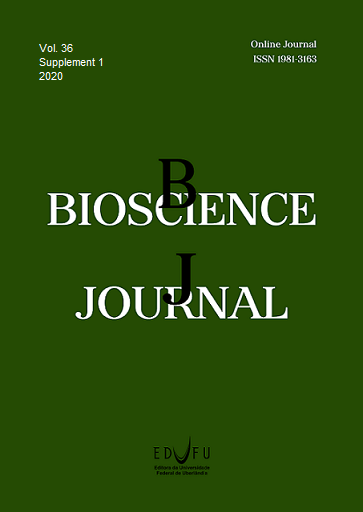Metabolic characterization and oil profile of sunflower cultivars cultivated with increasing nitrogen doses
DOI:
https://doi.org/10.14393/BJ-v36n0a2020-47816Keywords:
Helianthus annuus L., Biofuel., Oilseed.Abstract
Sunflower (Helianthus annuus L.) has great economic importance due to its oil yield and quality. Among the factors influencing these parameters, nitrogen fertilization stands out. In this study we evaluated the effect of different N-urea doses (0,10,30,50,90,130 kg N-urea ha-1) at planting and 30 days after emergency on soluble fractions, oil profile and yield of three sunflower cultivars (BRS324, Catissol 01and Neon). Plants were harvested at the flowering stage for metabolic study, and at the end of the cycle for oil extraction and characterization. The Catissol 01 genotype presented the highest N-NO3- accumulation capacity, mainly in the stem. The Neon genotype presented the highest achene production at 30 and 50 kg N ha-1. Oleic oil had the highest yield, with the Catissol 01 and Neon cultivar standing out. Among the cultivars, Catissol 01 is economically more suitable for biofuel production, when cultivated at 50 kg N ha-1 since higher N doses did not result in increased oil yield.
Downloads
Published
Issue
Section
License
Copyright (c) 2020 Janiélio Gonçalves da Rocha, Luiziene Soares Alves, Orlando Carlos Huertas Tavares, Elvia Mariam Lis Martinez Stark, Manlio Silvestre Fernandes, Rosane Nora Castro, André Marques dos Santos, Sonia Regina de Souza

This work is licensed under a Creative Commons Attribution 4.0 International License.





